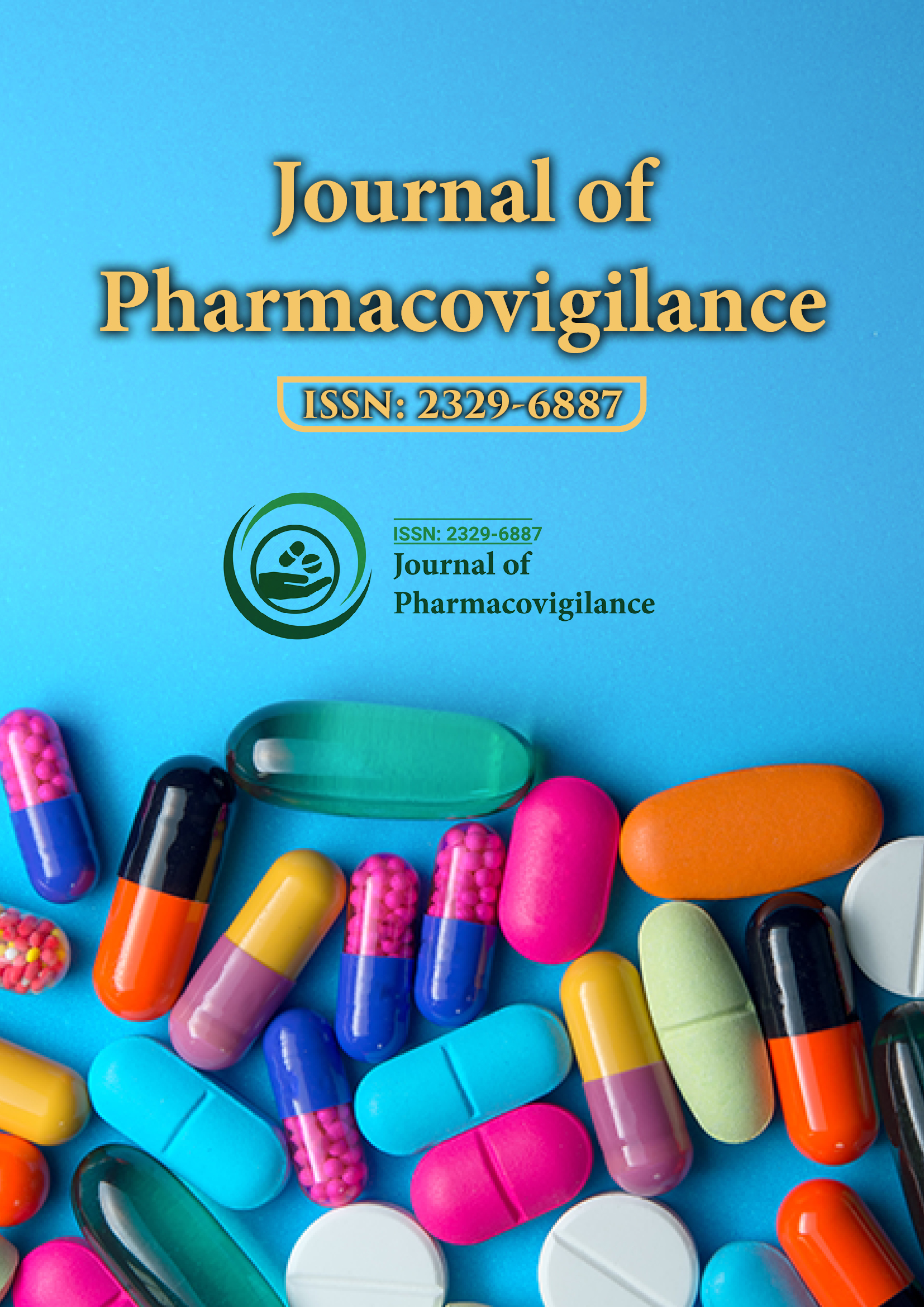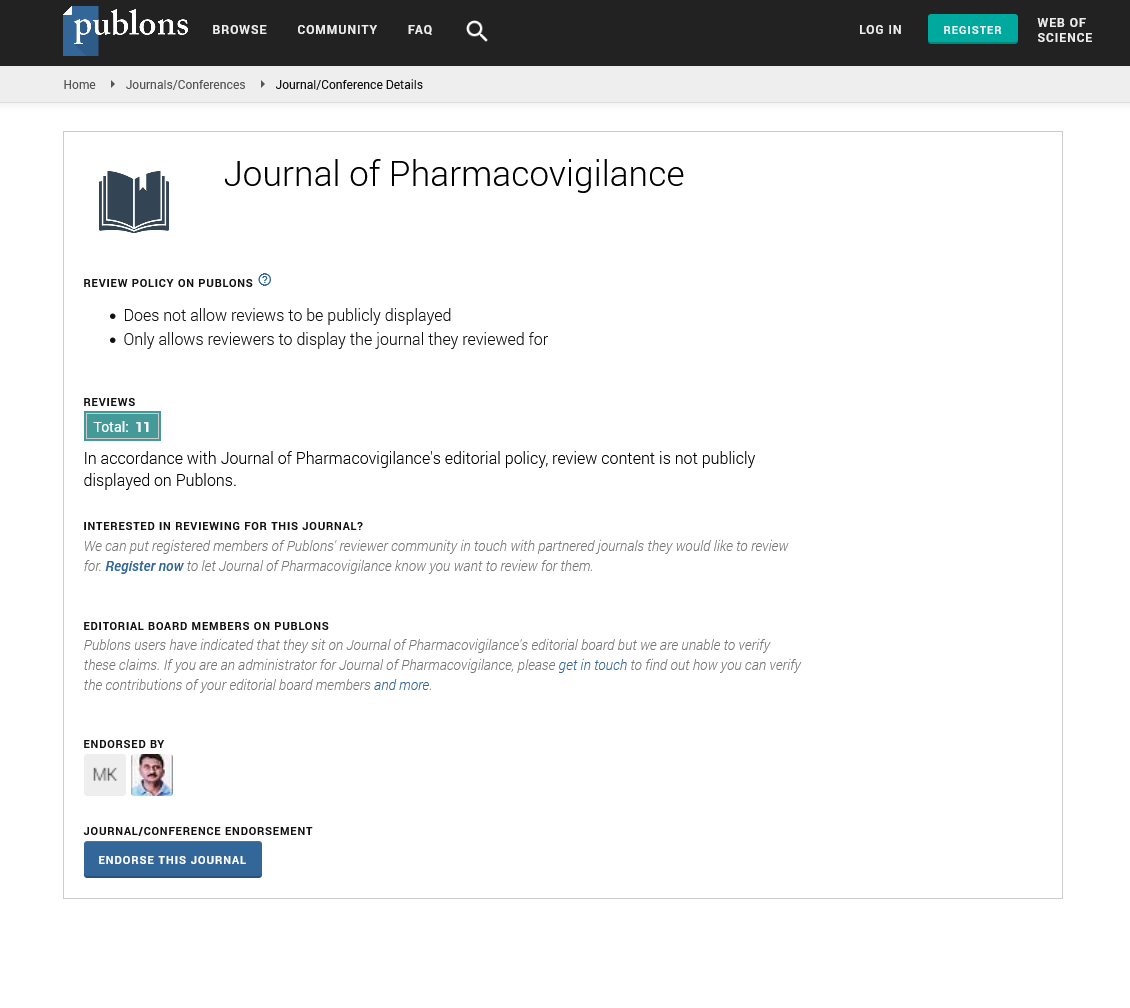Indexed In
- Open J Gate
- JournalTOCs
- The Global Impact Factor (GIF)
- RefSeek
- Hamdard University
- EBSCO A-Z
- OCLC- WorldCat
- Publons
- Euro Pub
- Google Scholar
Useful Links
Share This Page
Journal Flyer

Open Access Journals
- Agri and Aquaculture
- Biochemistry
- Bioinformatics & Systems Biology
- Business & Management
- Chemistry
- Clinical Sciences
- Engineering
- Food & Nutrition
- General Science
- Genetics & Molecular Biology
- Immunology & Microbiology
- Medical Sciences
- Neuroscience & Psychology
- Nursing & Health Care
- Pharmaceutical Sciences
Opinion Article - (2025) Volume 13, Issue 1
Mobile Health Apps for ADR Reporting Compliance
Lina Verhoeven*Received: 03-Mar-2025, Manuscript No. JP-25-28637; Editor assigned: 05-Mar-2025, Pre QC No. JP-25-28637 (PQ); Reviewed: 19-Mar-2025, QC No. JP-25-28637; Revised: 26-Mar-2025, Manuscript No. JP-25-28637 (R); Published: 02-Apr-2025, DOI: 10.35248/2329-6887.25.13.505
Description
The advent of mobile health applications has significantly influenced healthcare delivery, enabling real-time communication, patient education, disease monitoring, and medication adherence. Among their expanding functionalities, one of the most promising yet underutilized potentials is their application in Adverse Drug Reaction (ADR) reporting. Despite the established importance of pharmacovigilance, underreporting of ADRs remains a global concern, undermining efforts to ensure drug safety and post-marketing surveillance. Mobile health apps present a transformative opportunity to overcome barriers to ADR reporting by providing accessible, user-friendly platforms that facilitate engagement from both healthcare professionals and patients. These apps are now being developed and integrated within national pharmacovigilance programs to improve compliance, accuracy, and the overall efficiency of the ADR reporting system.
One of the critical challenges in ADR reporting has been the complexity and time-consuming nature of traditional reporting mechanisms. Paper-based forms or complex web portals often deter healthcare professionals who are already burdened with heavy clinical responsibilities. Similarly, patients often lack awareness or face technological barriers in navigating traditional reporting systems. Mobile health apps, with intuitive interfaces and on-the-go functionality, can bridge this gap by simplifying the process of capturing, documenting, and submitting ADRs. These applications often include structured forms with dropdown options, auto-filled demographic data, and guided prompts that reduce errors and improve the completeness of reports. Additionally, apps can incorporate multilingual support and accessibility features to increase inclusivity among diverse patient populations.
The real-time capability of mobile apps adds significant value to pharmacovigilance. Users can report ADRs as they occur, without delay, which is especially critical for severe or life-threatening reactions. Some advanced apps allow integration with mobile device sensors or wearable technologies to automatically collect physiological data, such as heart rate or blood pressure that could support signal detection and causality assessment. Furthermore, geo-tagging features embedded in some apps provide epidemiological insights by mapping ADR occurrence by region, potentially identifying geographic clusters of adverse reactions that warrant further investigation.
Mobile apps also serve an educational purpose by raising awareness about pharmacovigilance and empowering patients to participate actively in their own drug safety. Notifications, push alerts, and interactive tutorials embedded within the apps can inform users about drug-specific risks, common side effects, and the importance of reporting unexpected symptoms. For healthcare providers, these apps offer quick access to drug monographs, reporting guidelines, and updated safety communications from regulatory authorities. This dual-functionality of reporting and education creates a feedback loop that enhances vigilance and compliance.
Several countries have successfully adopted mobile health apps in their national pharmacovigilance frameworks. For example, the Yellow Card app developed by the UK’s Medicines and Healthcare products Regulatory Agency (MHRA) allows patients and clinicians to report ADRs directly to the agency. Similarly, India’s PvPI mobile app enables easy access to ADR forms and contact details of regional monitoring centers. These initiatives have led to an increase in the quantity and quality of reports received, suggesting a positive correlation between mobile app deployment and reporting compliance.
However, despite their potential, the adoption and effectiveness of mobile apps for ADR reporting face certain limitations. Data privacy and security remain primary concerns, especially when sensitive health information is transmitted via mobile platforms. Ensuring compliance with data protection regulations such as GDPR or HIPAA is crucial in maintaining user trust. Additionally, digital literacy and smartphone access vary across demographics, and solutions must be designed with equity in mind. Continuous evaluation of these apps through user feedback, usability testing, and pharmacovigilance outcomes is essential to refine their effectiveness and relevance.
Citation: Verhoeven L (2025). Mobile Health Apps for ADR Reporting Compliance. J Pharmacovigil. 13:505.
Copyright: © 2025 Verhoeven L. This is an open access article distributed under the terms of the Creative Commons Attribution License, which permits unrestricted use, distribution, and reproduction in any medium, provided the original author and source are credited.

